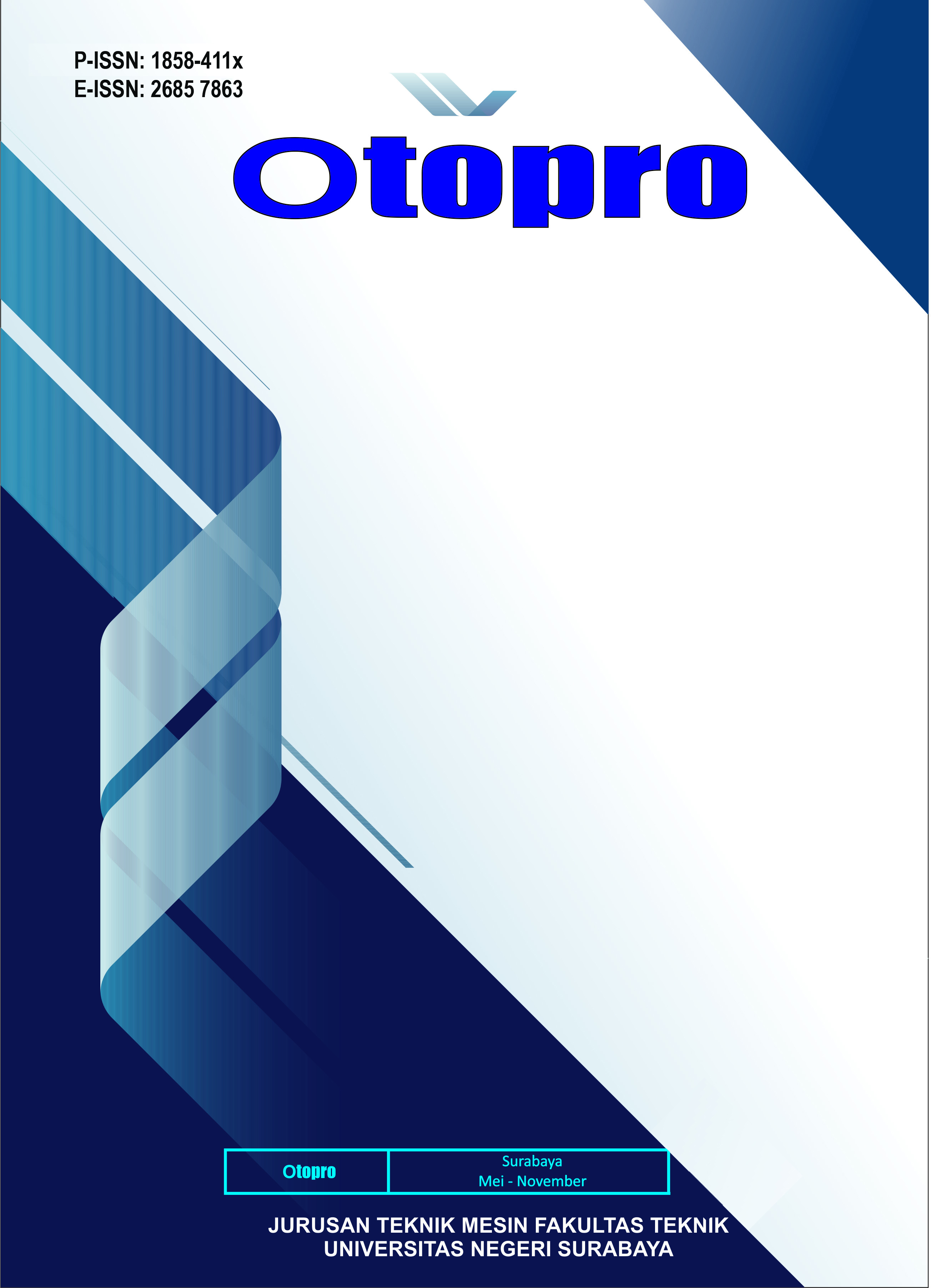PENGARUH JUMLAH DAN ARAH SAYATAN TERHADAP HASIL MILLING ALUMINIUM
DOI:
https://doi.org/10.26740/otopro.v19n1.p40-44Keywords:
Aluminium, CNC Milling, Number of feedingAbstract
The quality of production goods, especially milling on aluminum material, is considered good if it is characterized by good surface quality of the components and efficient (short) machining time. There are various factors that affect this. This study investigated the CNC milling machining parameters, namely depth of cut and step over, which were written as the influence of the number and direction of cuts on the surface quality and machining time of aluminum materials. The purpose was to obtain the appropriate parameters so that the machining process is more efficient and with the appropriate quality. The CNC milling used was CNC Dahlih with a 6mm diameter tool, feed rate of 460 mm/min, and rotational speed of 2800 RPM. The variables were vertical cutting direction (depth of cut 5mm) with variations in step over of 0.5 mm, 1 mm, and 2 mm, and horizontal cutting direction (step over 5mm) with variations in depth of cut of 0.5mm, 1mm, and 2mm. So that the number of cuts can be equalized to 4, 6, and 12 in the vertical and horizontal cutting directions. The results showed that the more cuts, the lower the surface roughness, but it increased the machining time.
References
Rachmadi, R., Yufrizal, A., Irzal, I., & Kurniawan, A. Pengaruh Sudut Potong Dan Kecepatan Putaran Spindel Terhadap Kekasaran Permukaan Benda Kerja Baja Karbon Ems 45 Menggunakan Mesin Bubut Konvensional. Jurnal Vokasi Mekanika (VoMek), 4(1), 151-157, 2022.
Syam, A. R., Yufrizal, A., Aziz, A., Syahri, B., & Aliafi, R. R. Perbandingan Nilai Kekasaran Permukaan Proses Frais Bahan Aluminium 6061 Menggunakan Endmill dan Fly Cutter dengan Variasi Spindle Speed pada Proses Finishing. Jurnal Vokasi Mekanika (VoMek), 3(4), 31-38. 2021.

Downloads
Published
How to Cite
Issue
Section
License

This work is licensed under a Creative Commons Attribution-NonCommercial 4.0 International License.
 Abstract views: 342
,
Abstract views: 342
, PDF Downloads: 296
PDF Downloads: 296


3.png)










